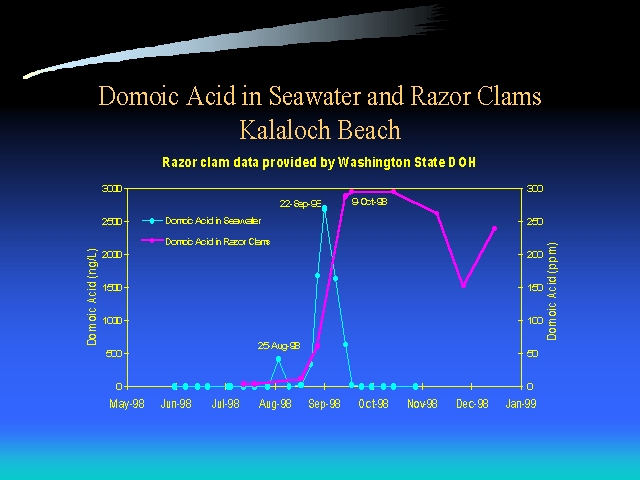Slide 11 of 17
Notes:
11. DOMOIC ACID IN SEAWATER AND RAZOR CLAMS AT KALALOCH BEACH
-Razor clam data from WDOH
-Toxin present in seawater and toxic clams
-Lag time between seawater and clam toxicity
-After Toxin in seawater goes down, clams remain toxic
-Razors take a long time to depurate
-As pseudos die, cells containing toxin sink to the bottom were they could still be ingested by clams or other shellfish
MESSAGE: TOXIN IN SEAWATER COULD BE AN INDICATOR OR FUTURE CLAM TOXICITY
For Kalaloch beach, we have plotted here the concentrations of domoic acid measured in razor clams along with the domoic acid levels measured in shore seawater samples. The razor clam data appears courtesy of the Washington State Department of Health.
As toxin in the seawater increases, toxin levels in razor clams also rises. There appears to be a lag time between the toxicity of seawater and the toxicity of razor clams, as expected due to the filter feeding mechanism of shellfish. However, when the cells crash in October, the clams remain toxic. Based on our experiences in 1991 and previous work, these clams will probably retain toxin at high levels for a considerable period of time (6 months to a year). This lag period between accumulation and the rapid crash of Pseudo-nitzschia observed here may explain why, in 1991, we did not observe large numbers of cells in water samples although razor clams contained high levels of domoic acid.

















